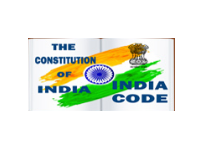Redesigning the PAR Format and Personal Dossier
6.1 For various personnel actions (e.g. promotions, placement, selection for special assignments, selection for training programs), different kinds of information about an officer would be required. At present, the Personnel Dossier of officers comprises the compilation of the ACRs over one’s career. The rules provide that in addition, the first page of the dossier should comprise information about the officer’s academic qualifications, languages known, papers and books published, recognitions earned, desserts received, etc. This requirement is not usually observed, largely on account of such information not being generally used for any significant personnel actions, such as promotion and empanelment.
6.2 It is proposed to adhere to the existing broad structure, with some enhancements to make the Personnel Dossier a comprehensive source of information about an officer for different personnel actions (except for the 360 degree evaluation, which is at the option of each cadre controlling authority)[1] An illustration of the kinds of information required for different personnel actions is given in the table below:
Table 2: Mapping Different kinds of Information about Officers to Various Personnel Actions:
| Personnel Actions > Kinds of Information V | Confirmation in a grade/service | Promotion to a higher grade | Empanelment | Selection to Particular Positions | Selection for Training | Retention in service |
|---|---|---|---|---|---|---|
| Performance in a given position/grade | Y | Y | Y | Y | Y | Y |
| Professional qualifications/academic background/research publications | N | Y | Y | Y | Y | N |
| Work Experience | N | Y | Y | Y | Y | N |
| Exceptional work accomplished | N | Y | Y | Y | Y | Y |
| Reprimands/strictures | Y | Y | Y | Y | Y | Y |
| Reputation (360 degree evaluation) | N | N | N | Y | Y | Y |
Structure of the PAR Dossier:
6.3 Accordingly, the PAR Dossier may comprise the following documents:
- Curriculum Vitae of the officer (detailed below), to be updated periodically (some entries) by means of the annual PAR.
- The set of PARs earned in service throughout one’s career.
- The set of PARs (or similar appraisal) earned by the officer on deputation on Foreign Service to organizations outside the Indian governmental system.
- Reports of the biennial medical examination
- The set of records of performance made by the concerned institution for training courses and academic courses attended, including while on Study Leave.
The Personnel Dossier may comprise the following sections:
6.4 Part A: Curriculum Vitae:
6.4.1 Section I: Personal Data:Such data would comprise the name, gender, parentage, State of domicile, place of birth, date of birth, and particulars of the nuclear family of the officer (names, gender, date of birth, nationality [if different from that of the officer], and specific relationship to the officer), whether or not they are dependants. Such data would be compiled at entry into service, and updated each year during the PAR process.
6.4.2 Section II: Academic and Professional Qualifications: Such data would comprise the particulars of all academic degrees earned and training courses completed, the period during which attended, degrees earned (if any), major and minor fields, thesis title (if relevant, Institution/University and location, overall grade/division (if applicable). (No distinctions should be made between academic degrees earned prior to and during the service career. Such data would be compiled at entry into service, and updated each year during the PAR process
6.4.3 Section III: Publications Record:A listing of all peer reviewed professional research publications (including published seminar papers), giving title, Journal/book in which published, publisher, date of publication. Purely literary work or articles published in newspapers or magazines for the general public must be excluded. Such data would be compiled at entry into service and updated each year during the PAR process
6.4.4 Section IV: Work Experience: Such data will comprise a listing of all positions held (title, organization, period held, description of work content), including those held in organizations outside the Indian governmental system. Such data would be updated each year during the PAR process.
6.4.5 Section V: Recognitions Earned and Reprimands/ Strictures/ Penalties Received:Such recognitions would include letters of commendation/medals/honours received from the State or Central Government for particular actions or accomplishments, and recognition from prestigious bodies either for public service or other accomplishment. (Such recognitions need not be limited to accomplishments related to one’s strictly official responsibilities, but may comprise, for example, literary or scientific or sports or community service accomplishments). Additionally, letters of reprimand, punishment by disciplinary authorities including courts, and strictures from courts would be included. Such data would be included as and when each such recognition/dessert arises.
6.4.6 Since for the most part, the information relating to Sections I-V above are not entered in the personnel dossiers at present, it is suggested that at the start of the new system, each officer should compile a comprehensive CV in terms of the structure given above, supported by relevant documentation. Subsequently, each of these sections would be updated through the PAR process and, in any case, atleast once every five years as well as prior to important personnel actions such as promotions or empanelment.
6.5 Part B: Performance Reports:
6.5.1 For periods in the service of the Government (State, Centre, or local), the PARs will be compiled for each reporting period in the format set forth below. Specific sections in the PAR would be used to update each of the sections in the CV. While the PARs in the new format may be prepared and compiled in the future, the existing ACRs would be retained till start of the new system (i.e. for past periods for which the ACRs are missing, they should be prepared in terms of the old ACR format).
6.5.2 In case of periods spent on training courses or Study Leave or deputation on foreign service to organizations outside the Indian governmental system, the performance reports from the institution or organization[2] should be compiled in the Part B of the Personnel Dossier in chronological order with the usual PARs.
6.6 Structure of the PAR:
6.6.1 Taking note of the discussion and recommendations contained in Chapters 4 and 5, the Group recommends that only 2 sets of proforma be used for each of the All-India Services. One proforma would apply for all levels equivalent to that of the Chief Secretary (in the case of IAS)/ Director General of Police (in the case of IPS)/ Principal CCF (in the case of IFoS). This would be a common proforma applicable to all the three All India Services. For the remaining levels there would be only one proforma, with the IAS and IFoS having a common proforma and the IPS having a slightly different version to accommodate some of the specific requirements of the service. The recommended proformae are Annex 10A (for the top levels) and at Annex 10B (for remaining levels). Annex 11 is a set of general guidelines that could be adopted for filling up the performance appraisal reports. Due to shortage of time the Group has not been able to design suitable proforma for the other Group ‘A’ Services. An exercise may be carried out to make any necessary amendments in the proforma suggested for the All India Services, to reflect service specific requirements of the other Group A services.
6.6.2 The Group also recognizes that once a decision is taken to computerize the performance appraisal management system, suitable changes may be needed in the PAR proformae to facilitate easier and more accurate data entry. However, the exact design will depend on the structure of the software designed and will have to await the same.
6.6.3 The computerized performance management system may be designed to update the CV automatically, by drawing on the data items available from each years performance appraisal report.
6.7 Calendar
6.7.1 The suggested schedule of cut-off dates (deadlines) for the various activities in the performance appraisal system is as follows:
| Activity | Cut-off dates | ||
|---|---|---|---|
| Below super-time scale | Super-time scale | Above super-time scale | |
| Submission of draft Work Plan for current year to reporting officer (if not submitted by appraisee within the deadline, reporting officer to prepare and file on behalf of appraisee) | 15th April | 15th April | 15th April |
| Finalization of Work Plan for current year after discussion with reporting officer and filing of Work Plan with Reviewing Officer; Feedback and Counselling session | 30th April | 30th April | 30th April |
| Mid-year review of Work Plan and filing with Reviewing Officer (if not completed by deadline, the original Work Plan will prevail) | 31st October | 31st October | 31st October |
| Blank PAR form to be given to appraisee by Department of Personnel, specifying the reporting officer and review officer | 1st April | 1st May | 1st June |
| Self appraisal for current year | 30th April | 31st May | 30th June |
| Appraisal by reporting officer | 31st May | 30th June | 31st July |
| Appraisal by reviewing officer | 30th June | 31st July | 31st August |
| Disclosure to appraisee | 15th July | 15th August | 15th September |
| Representation of appraisee, if any (if none, transmission of the PAR to the Department of Personnel) | 31st July | 31st August | 30th September |
| Comments of reporting officer, in case of appraisee makes comments | 15th August | 15th Sept. | 15th October |
| Comments of reviewing officer, in case appraisee makes comments. If appraisee’s comments are accepted, revised PAR to be finalized and disclosed to appraisee | 31st August | 30th September | 31st October |
| Finalization by Referral Board if reviewing officer does not accept appraisee’s comments | 31st October | 30th November | 31st December |
| Disclosure to Appraisee | 15th November | 15th Dec. | 15th January |
| End of entire PAR process | 31st March | 31st March | 31st March |
6.7.2 While the time frame given above may not be absolutely rigid, it should be carefully monitored by the Department of Personnel. An officer who does not meet the prescribed time schedule should be required to explain the delay in his forwarding note/letter to the next higher authority/Department of Personnel. The entire process must, however, be completed by the 31st of March [i.e. within one year of the close of the relevant year to which the appraisal report relates], as suggested in the last row of the table above. If the PAR is not filed with the personnel department by 31st March, written explanations should be sought from the appraisee, Reporting Officer, Reviewing Officer, and Referral Board, to be furnished, in each case within one month. The Personnel Department will determine, on the basis of the explanations, responsibility for the delay, and pass appropriate strictures on the officer(s) concerned.
[1] In Part II of this Report, we discuss the use of the information in the Personnel Dossier for promotions and placements (including empanelment).
[2] Performance reports (grade cards) from training/academic institutions would, in general, vary widely from the PAR format. In case of organizations outside the Indian governmental system, the choice of the format of performance appraisal (and process), i.e. whether to follow the format/process for the concerned service, or their own, should be left to the borrowing organization.






 कार्मिक एवं प्रशिक्षण विभागDepartment of
कार्मिक एवं प्रशिक्षण विभागDepartment of 













